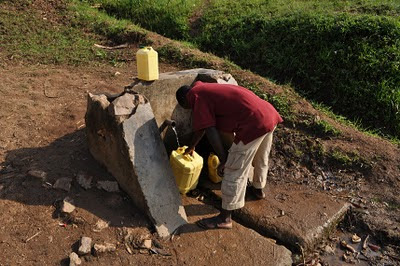 |
| My 7th grade classroom. There are 70 students in this class. |
 |
| The kitchen where all meals are prepared. Those are some seriously huge pots and fires going. Today's meal: rice and beans! |
 |
| The living quarters of the students. |
 |
| Indashakirwa College, the school I taught at for 2011. |
A student’s life in Rwanda can be quite demanding. Wake up at 6 am, go fetch water, clean up, get to school, lunch, more school, then clean and get to bed. There is only about an hour of free time for the students each day.
Rwanda has two types of schools: boarding schools (where students live at the school) and day schools. My school, Indashakirwa College, was a boarding school of about 300 students. Class sizes range from 50 to 70 students, with students sharing desks to save space.
The students do not get breakfast but eat a communal lunch provided by the school. At 6 pm, the students eat a second communal meal. Almost all meals are eaten in the classrooms and must be cleaned after the meal. Their meals generally consist of rice, potatoes, and beans. No meat, no fruit. There is no privacy here: showers are communal, students share beds in cramped quarters, students share desks and even pens.
The village has no electricity, so for two hours each night a generator is brought in to the school to light the classrooms to allow the students to study. The light is poor and the students try to huddle together to get the best light each night. While the students sit in the classroom all day and learn, they return at night to study in bad light.
The school schedule is much different from America. Here is a schedule of an 8th grade class at my school:
If you are keeping track, that is four languages, three sciences, and fourteen subjects total they learn. Furthermore, the students’ native language is Kinyarwanda, but all subjects are taught in English. Between the schedule, chores, and expectations, a student’s life in Rwanda is all-encompassing during the school year.




